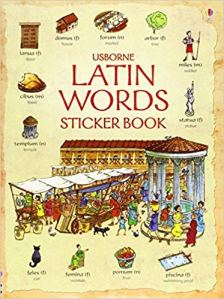Mrs. Claus looked up from the book she was reading, holding a small glass of brandy. “I think you should write a memoir,” she said to her husband.
Santa turned to look at her, still leaning over the drawing he was doing of a new design for a toy rocket. “Do what?” he said. “What did you say?”
“I think you should write a memoir. They’re quite the fad these days, and you’ve done a lot of interesting things.”
He turned back to his drawing. “I don’t have the imagination to be a writer.”
“That was in the old days,” she said. “You don’t need imagination to be a writer anymore. People just write about themselves.”
He waved a hand in her direction and huffed, but that evening as he was getting ready for bed, he thought I have done a lot of interesting things. Like the first summer out of college, before he grew the beard, he had led whitewater rafting trips. That experience had been useful in getting accustomed to the terror of bouncing in a sleigh through the air, behind half wild reindeer.
The next afternoon he sat down with a pad of paper and began making notes. If he did try writing a memoir, what should he include? And he wasn’t definitely saying he was going to, this was just . . . what about the time he was ten years old and rode a horse at camp? A horse is not a reindeer, but he was good at it, and didn’t that show something about the path to the future? He started writing the incident down until he had a half page, then read it over and thought This is just about the horse and he tore the page out and balled it up, tossing it toward the trashcan the elves had made.
He thought about beginning with a kind of introduction to his life. “I was a chubby child, which was a problem in school, as you might imagine. My nickname for years was Doughboy, when it wasn’t something worse. I don’t regret the donuts, though.”
He stopped and sighed, looked at the paper with combined perplexity and irritation. That was not an interesting way to start a book, so he began again. “I came to the North Pole when I was twenty-six, and at first I thought I’d do this job a few years, then move on to someplace warmer. I had always thought about studying meteorology, although my major in college was hospitality, but I was always deeply interested in weather. I could see myself as the weatherman on some small TV station. I mean I’ve got the jolly part down, and once I learned how to talk about clouds and snow and all, I could have done that. I don’t think I’d have a beard if I was a weatherman, though. It was the cold weather up here that made me go for so long without shaving.”
That paragraph seemed like a good start, so he went to the kitchen for a snack and didn’t come back to the memoir for a week.
When he did return to what he had done, he was surprised to see that what he had written previously seemed completely stupid. How did that happen? It was good when he wrote it. Maybe he should make a list of interesting things that had happened in his life, things he could use. He began:
- training reindeer, which are actually rather stupid animals but stubborn, and they’re afraid of flying
- the elves wanting to have several different craft beers in the commissary, as if it’s easy to do that where we are, but try telling them anything they don’t want to hear
- one Christmas Eve a woman met me in her living room wearing a thin gown—I could clearly see what was there, if you know what I mean—and she started singing “Santa baby, I want a yacht and really that’s not a lot. Been an angel all year. Santa baby, so hurry down the chimney tonight.” I was, like, already down the chimney, standing in her living room, wondering how quickly I could get out of there. I mean, a yacht? You want a yo-yo or a doll that pees, I’m your guy.
After making the list, he felt a little tired. He looked down at the pad of paper and said to himself, “Writing is a lot harder than I thought. I think I’ll go take a nap.”
Thank you for reading this blog. Be well, Merry Christmas, and have a donut.















